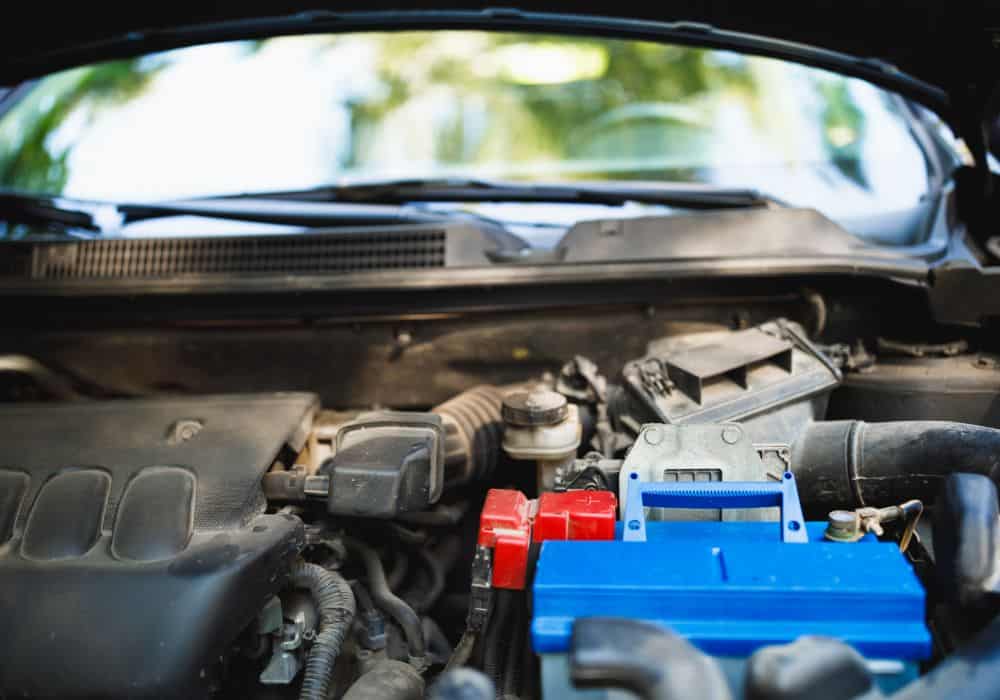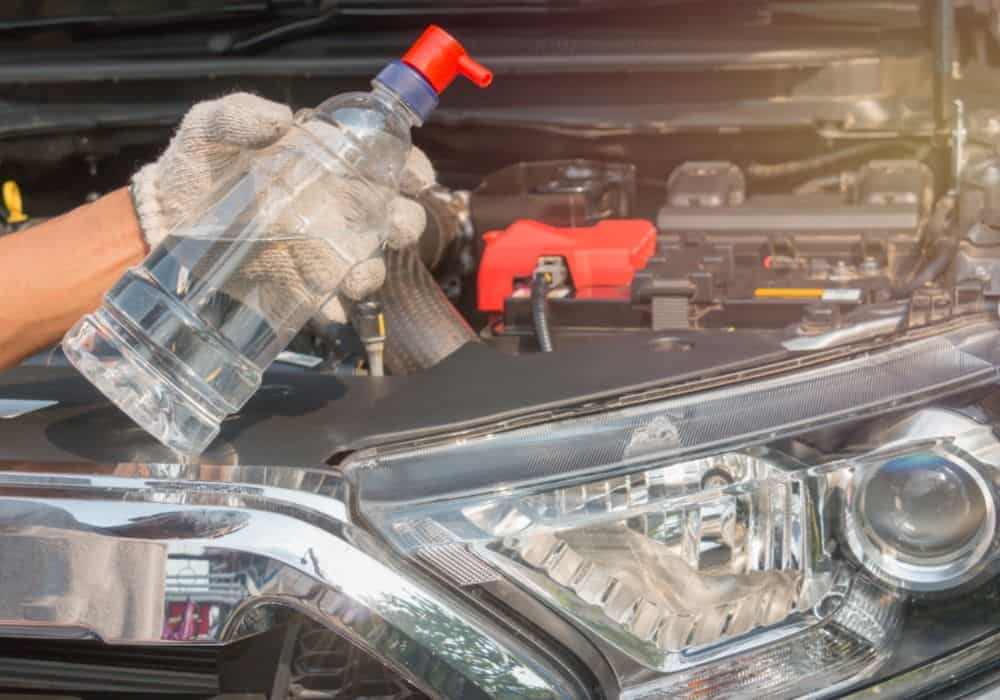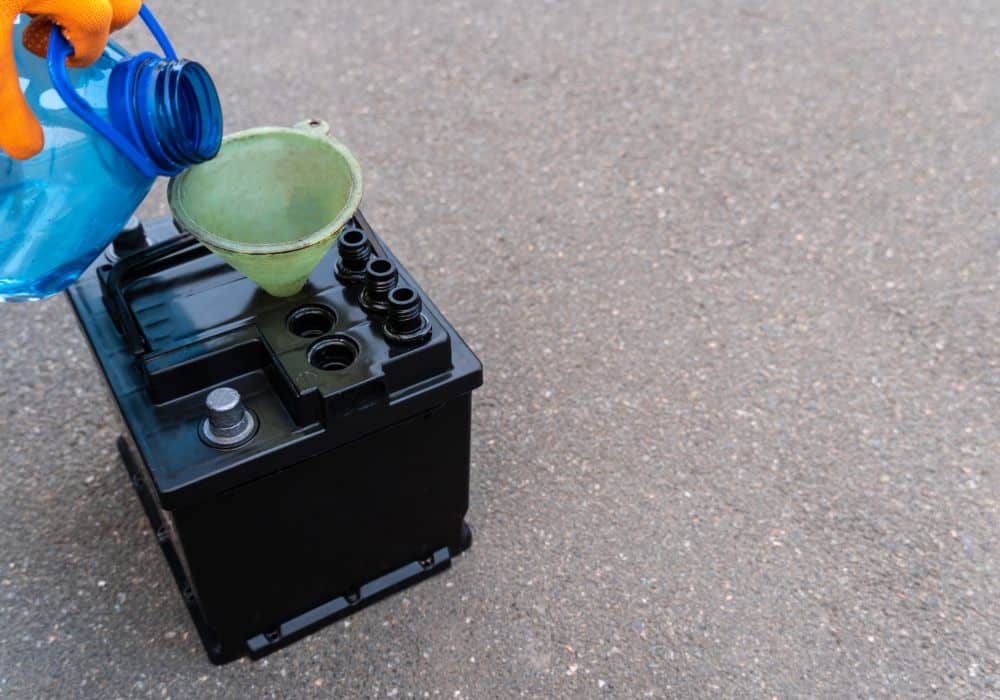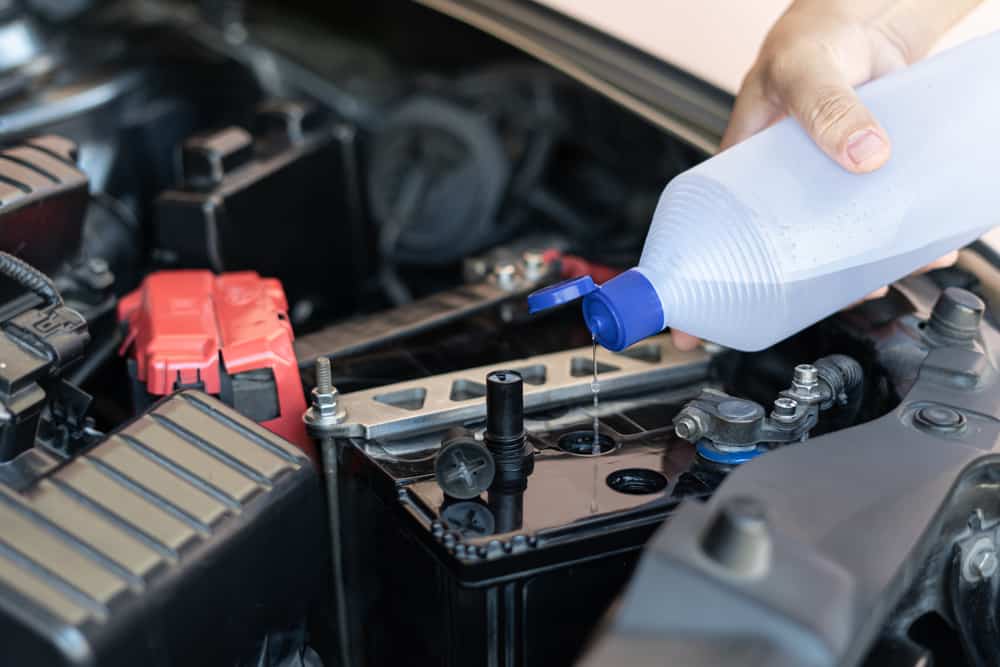Many people don’t know that there is a specific kind of water you’re supposed to put in a car battery. In this post, we’ll explain what that water is and why it’s important.
We’ll also go over how to properly maintain your battery to keep it running strong for as long as possible. So, what kind of water do you put in a battery? Read on!
Table of Contents
- What kind of batteries need water added?
- Why do lead-acid batteries require water to be added?
- What is a deep-cycle battery?
- What kind of water do you put in a car battery?
- How to check if my battery needs water
- How to top off the water in your battery
- How often should I check my battery fluid levels?
- Conclusion
What kind of batteries need water added?
Lead acid batteries are the most common type of battery that requires a water top-up. One key characteristic of lead acid batteries is their electrolyte solution, a mixture that travels through the battery cells to help facilitate energy production.
Do AGM batteries use water?
Most standard modern cars use an AGM battery, and It is not necessary to add water to a battery that uses AGM technology. AGM stands for “absorbent glass mat,” and it refers to the specialized design of these batteries.
The glass layer inside an AGM battery effectively prevents any liquid from escaping, so there is no need for regular maintenance or top-ups.
Why do lead-acid batteries require water to be added?

Most lead acid batteries require water to be added periodically in order to maintain the electrolyte solution’s proper levels and composition.
When lead acid batteries are in use for an extended period of time or under high heat or heavy loads, small amounts of water can still be lost from evaporation or chemical reactions. Also, while the battery is recharging, electricity passes via the water of the electrolyte.
At this point, the water turns back into its initial form, hydrogen, and oxygen, leading to water loss during the gassing process. As such, it is important to monitor lead acid battery levels to ensure that they always contain enough water for optimal operation.
However, it is important to look at the instructions on your battery as some batteries are maintenance-free batteries, meaning they don’t require adding water.
What is a deep-cycle battery?
Both lead acid batteries and AGM batteries are a type of deep cycle battery.
Deep cycle batteries are specialized batteries that are specifically engineered to be able to withstand multiple discharges and recharges without losing significant performance.
As their name suggests, these batteries have much deeper discharge cycles than standard batteries, making them ideal for applications that require ongoing or heavy use.
Regular batteries typically only give one or two charge/discharge cycles before losing power and starting to deteriorate. In contrast, deep-cycle batteries can withstand hundreds of cycles before reaching the end of their useful life.
This makes them an extremely valuable component for devices like electric vehicles, where energy needs to be constantly supplied over a long period of time.
What kind of water do you put in a car battery?

Given the important role that lead-acid batteries play in countless applications, it is critical to choose the right type of water when using or maintaining them.
While both distilled water and deionized water can be used effectively, deionized water is widely regarded as the best option. This is because deionized water is purer than distilled water, as grains and ions have been removed through a process called deionization.
Because heavy metal contaminants tend to cling to those grains and ions, deionized water offers greater protection against the harmful effects of lead acid battery corrosion.
Furthermore, since this type of water does not contain dissolved minerals or salts, it does not contribute to mineral buildup on battery plates or insertions over time.
In short, for those looking for reliable performance from their lead-acid batteries, deionized water is the best choice.
Can I use tap water to top off my battery?
Putting tap water into a lead-acid battery could actually be harmful to your battery. This is because most tap water contains impurities such as chlorides and chemicals that can damage the battery’s internal components.
In particular, the high mineral content of most tap water can interfere with the chemical reactions inside the battery to produce energy. Furthermore, as these chemicals are dissolved into the battery fluid, they can lead to a form of corrosion known as sulfation.
This results in reduced power output and an overall decrease in overall battery life. This is also true of bottled water, such as purified water or spring water.
Can I use bottled water to top off my battery?
Bottled water is found in grocery stores and gas stations and sold as a single or pack. These usually have a label that says “spring water” or “purified water.”
While these may be a better option than tap water for drinking, they contain the same ingredients as tap water, such as chloride, that can damage your battery.
How to check if my battery needs water

There are several steps that can be taken to check your lead acid battery fluid levels. It is important to know exactly what to look for and how much water you need so you don’t harm your battery.
Start with a charged battery
The first step is to ensure that your battery is fully charged before conducting any tests. Once it is charged, you will need to remove the vent caps from each cell. Be careful not to spill any of the electrolyte solutions onto your hands or clothing.
Examine your electrolyte levels
You will typically find three main types of electrolyte levels in lead acid batteries: low, normal, and maximum.
At the low electrolyte level, the solution is so diluted that the lead plates are fully exposed. If this is the case, then additional water will need to be added in order to ensure the proper functionality of your batteries.
At the normal electrolyte level, there is enough liquid to cover the entirety of the lead plates, but no more than this. It’s important not to add more water once you reach this point, as it can interfere with proper electrical flow within your battery cells.
Lastly, at the maximum electrolyte level, there is enough liquid to completely submerge all of the lead plates within your battery cells. With this information, you should be able to check your lead acid battery solution levels accurately and effectively.
How to top off the water in your battery
Now that you have checked the fluid levels of your battery, it is time to refill it. You need to be careful while refilling your battery to not overfill it. Just like underwatering your battery can cause damage, so can overfilling it.
Step1: Start with a charged battery
Just like you did when checking your fluid levels, you will need to first make sure your battery is charged before adding water. If your battery isn’t adequately charged, then adding water can cause several issues.
Excess electricity can escape from the terminals and create a safety hazard or damage the battery or other components in your car. Additionally, putting water into a low-charge battery can destabilize the electrolyte, leading to corrosion and cell damage.
To prevent these problems, make sure that your battery is fully charged before adding water.
Step2: Check the plates for build-up
Next, make sure that there is no build-up on the battery’s plates. If there is, you will need to clean the battery using a solution of baking soda and distilled water before proceeding to add water.
Once your battery is clean and dry, you can remove the plastic caps on top of the battery cells using an insulated screwdriver or wrench.
Step3: Add water to your battery
Using a funnel, slowly pour distilled or deionized water into each cell until it reaches the correct place on the water level indicator.
Be sure to replace any caps that were removed during this process and allow your battery to fully recharge before using it for anything important. By following these simple steps, you can easily ensure that your lead acid battery stays hydrated and ready for use at all times.
How often should I check my battery fluid levels?
There is no one standard when it comes to checking lead acid battery electrolyte levels. The frequency of maintenance will depend on how often you use your vehicle.
For example, if you only drive a few miles a day or go on frequent short trips, it may be enough to check your battery’s electrolyte levels once a month to make sure that it stays full.
In contrast, if you regularly drive long distances, then you may need to perform regular checks more frequently. You can start out checking it once a month, and if it is significantly low, try checking it every other week.
Ultimately, the best thing to do is to consult your vehicle’s manufacturer guidelines and follow their recommendations for optimal battery maintenance.
Conclusion
Did you find this article helpful? Let us know in the comments. We love getting feedback—both positive and constructive—from our readers.
And if you’re curious about other ways to keep your batteries healthy, be sure to check out some of our other articles on battery maintenance. Thanks for reading!
